This article was co-authored by Kateri Berasi, PsyD. Dr. Kateri Berasi is a Licensed Clinical Psychologist and the Founder of Transcendent Self, PLLC, a group therapy practice offering affirmative, collaborative, and intentional care, based in Brooklyn, New York. With over ten years of experience in the mental health field, Dr. Berasi specializes in working with adults from the LGBTQIA+ community and creative industries through individual therapy, couples counseling, group therapy, and costume therapy. She holds a BA in Psychology, Art History, and French Language and Literature from George Washington University and an MA and MEd in Mental Health Counseling from Columbia University. Dr. Berasi also holds a PsyD in Clinical Psychology from Long Island University.
There are 12 references cited in this article, which can be found at the bottom of the page.
This article has been viewed 98,255 times.
Fear of crossing over bridges (gephyrophobia) can be debilitating, but there are things one can do to cope and eventually move beyond this phobia. Gephyrophobia is experienced in different ways; for some, driving over high bridges and gorges is especially intimidating, whereas other people find walking over bridges especially scary. This phobia may be connected to a traumatic experience or a learned response to driving or walking over bridges. It can prevent you from getting to work, school, or even having a good walk with family or friends.[1] With proper therapy, gradual exposure to bridges and simple coping strategies, one can effectively deal with gephyrophobia.
Steps
Trying Different Forms of Therapy
-
1Review your symptoms. You should review your symptoms prior to visiting a doctor or specialist. Common symptoms of gephyrophobia include sweaty palms, a tingling sensation, numbness, trembling, nausea and shortness of breath. These symptoms are experienced either in the anticipation or actual crossing of bridges. One may also experience anxiety about death, crashing and other violent feelings.[2]
- The most obvious symptom is an irrational fear of bridges and the situations associated with driving over bridges
- The tendency to avoid bridges and driving over them is also characteristic of this specific phobia.
- Anticipatory anxiety is often associated with gephyrophobia. In this case, you may become fearful of bridges even before passing over them.
- Panic attack is often associated with gephyrophobia. It entails a rapid heart rate, nausea or diarrhea, sweating, numbness, tingling, feeling dizzy or lightheaded.
-
2Review your related medical conditions. Gephyrophobia is often part of broader anxiety patterns. It tends to impact people who also get panic attacks. It's also related to a fear of heights and open spaces.[3]Advertisement
-
3Find a good therapist. A variety of forms of therapy have been used to treat specific phobias like the fear of crossing bridges. Talk therapy, exposure therapy, cognitive behavioral therapy and other approaches have been used to help people with specific phobias like gephyrophobia.[4]
- Ask your doctor for a reference to a good psychiatrist or psychologist who has experience with phobias. Your doctor may refer you to a psychiatrist, psychologist or other mental health professional.
-
4Find a therapist specializing in cognitive behavioral therapy. Ask your doctor for a therapist with this specialization or who has experience working with phobias. This approach combines exposure with other techniques that can help you cope with fear and anxiety. You develop new perspectives on your fears and beliefs around bridges. Developing a sense of control over your thoughts and feelings about bridges is central to this approach.[5]
-
5Find a therapist specializing in desensitization or exposure therapy. Ask your doctor about therapists with this kind of specialization. This focuses on changing your response to the scary situation such as crossing bridges. By gradually exposing yourself to the cause of your fear you can learn to cope with your anxiety. For instance, the therapist may begin by asking you to imagine going over a bridge and then build up to watching movies of going over bridges. The duration of the exposure is gradually increased each session. Eventually, you will build up to actually going over a bridge.[6]
- Combine exposure with cognitive behavioral therapy. Therapy involving a combination of gradual desensitization with cognitive behavioral therapy has been effective with middle and older age adults.
- Shorter exposure sessions combined with cognitive behavioral therapy has been shown to be effective for children and adolescents with specific phobias.
-
6Explore talk therapy with a psychologist. You can explore the causes of your fear of bridges and related anxieties with a psychologist. Talk to them about the causes of your fear. Together, you might be able to get down to the root of what caused your fear. Explore your earliest memories of this fear with your psychologist.[7]
- Half the battle of managing fear is letting go of our struggle to control it. Once we let go, we can willingly accept our discomfort, get grounded in the present moment, and put our energy into doing things that are in line with what matters to us.
-
7Ask your doctor about appropriate medication. Your doctor or psychiatrist may be able to prescribe medications that will help you deal with the symptoms of gephyrophobia. Although there are no medications that can cure this condition completely, there are certainly some medications that will help relieve your symptoms.[8]
- Ask your doctor about beta blockers. These medications block the influence of adrenaline on the body. They can be taken before a scary event like crossing a bridge. They will reduce symptoms like pounding heart and elevated blood pressure.
- Ask your doctor about using antidepressants for gephyrophobia. Selective serotonin reuptake inhibitors influence your mood and can be used to help treat anxiety associated with specific phobias.
- Ask your doctor if any sedatives will help with your condition. These medications help you relax during scary situations.
Desensitizing Yourself to Bridges
-
1Acknowledge your condition. Recognize that you have a fear of bridges, and that it needs to be overcome. Once you bring the condition to mind, you can start to work on acclimatizing yourself to bridges by watching films, imagining bridge crossings and crossing small bridges.
-
2Watch a movie with a bridge in it. By watching a film with a bridge in it, you can begin to desensitize yourself to the image and feel of crossing over bridges. There are numerous films with crossing bridges as a sub-theme and many of these films even include the word “bridge” in their title. You can search film databases, cable or online networks for films with the word “bridge” in the title.
- In the 1995 Clint Eastwood film “Bridges of Madison County,” a national geographic photographer is shooting a story about the covered bridges of Madison county and falls in love with a woman who lives in the area.
- The 1957 film “The Bridge on the River Kwai” is a British-American war film that depicts the construction of a railway bridge to transport prisoners of war.
-
3Try crossing a small bridge. Cross a smaller sized bridge with a group of friends, a counselor, or a therapist. By starting with a small bridge, you can start developing the physical and mental stamina for larger bridges. If you have strong social support from friends and a therapist, you may be able to gradually build up your stamina for crossing bridges.[9]
- If crossing a small bridge is a little too scary at first, imagine yourself taking the first few steps to help you make you less anxious.
- If you are undergoing treatment for your condition, you should follow your therapist's recommendation on this process.
-
4Maintain your regular routine. It is important to maintain all of your regular school and work routines. This will give you a sense of order and balance in life.[10]
Coping with the Need to Cross Bridges
-
1Get your family members to drive you over bridges. Breathe deeply while the car is going over the bridge. Trust your friends and family to get you across.
-
2Think about something else while crossing the bridge. If you engage your mind in something completely unrelated, it can help to pass the time while you are driving over the bridge.[11]
- Recite a list of baby names.
- Read license plate numbers backwards.
- Count to one hundred. If you finish, start over again and repeat until you have crossed the bridge.
-
3Find out if the bridge has a driving service. Many long bridges have either free or paid bridge driving services for people with gephyrophobia. Prior to your trip, phone regional authorities to find out if the bridges you need to cross have services for people with your condition.[12]
- Pay twenty five dollars for someone to drive you over the Chesapeake Bay bridge.
- Use the free driving service for the Mackinac Straits bridge in Michigan
-
4Join a support group for people with fear of going over bridges or related phobias. [13]
- Search a list of mental health support groups for groups that support specific phobias.
- Talk to people online who share your fear. They can help. Talk to ex-sufferers, who eventually found their way out of the terror. Take their advice, and listen with care and time.
- Tell someone about your fear. This can be a family member, relative, friend, or lover. They can all help. Without them, you might be stuck in the dark pit of gephyrophobia forever. They will give you all the strength needed to pull yourself together, and achieve the goal you have always longed to achieve.
References
- ↑ https://www.nbcnews.com/healthmain/gephyrophobics-fear-crossing-bridge-when-they-come-it-892759
- ↑ https://www.nbcnews.com/healthmain/gephyrophobics-fear-crossing-bridge-when-they-come-it-892759
- ↑ https://www.betterhealth.vic.gov.au/health/conditionsandtreatments/panic-attack
- ↑ https://my.clevelandclinic.org/health/diseases/4451-panic-disorder
- ↑ https://www.nhs.uk/mental-health/talking-therapies-medicine-treatments/talking-therapies-and-counselling/cognitive-behavioural-therapy-cbt/how-it-works/
- ↑ https://psycho-trauma.nl/wp-content/uploads/2015/08/De-Jongh-1999-EMDR-and-phobias.pdf
- ↑ https://www.mind.org.uk/information-support/types-of-mental-health-problems/phobias/treatment/
- ↑ https://www.mind.org.uk/information-support/types-of-mental-health-problems/phobias/treatment/
- ↑ https://www.apa.org/ptsd-guideline/patients-and-families/exposure-therapy
Expert Q&A
-
QuestionHow do I get over my fear of driving over a bridge?
 Kateri Berasi, PsyDDr. Kateri Berasi is a Licensed Clinical Psychologist and the Founder of Transcendent Self, PLLC, a group therapy practice offering affirmative, collaborative, and intentional care, based in Brooklyn, New York. With over ten years of experience in the mental health field, Dr. Berasi specializes in working with adults from the LGBTQIA+ community and creative industries through individual therapy, couples counseling, group therapy, and costume therapy. She holds a BA in Psychology, Art History, and French Language and Literature from George Washington University and an MA and MEd in Mental Health Counseling from Columbia University. Dr. Berasi also holds a PsyD in Clinical Psychology from Long Island University.
Kateri Berasi, PsyDDr. Kateri Berasi is a Licensed Clinical Psychologist and the Founder of Transcendent Self, PLLC, a group therapy practice offering affirmative, collaborative, and intentional care, based in Brooklyn, New York. With over ten years of experience in the mental health field, Dr. Berasi specializes in working with adults from the LGBTQIA+ community and creative industries through individual therapy, couples counseling, group therapy, and costume therapy. She holds a BA in Psychology, Art History, and French Language and Literature from George Washington University and an MA and MEd in Mental Health Counseling from Columbia University. Dr. Berasi also holds a PsyD in Clinical Psychology from Long Island University.
Licensed Clinical Psychologist Diaphragmatic breathing can help you feel less anxious! You can also engage in mindfulness exercises that will calm your nervous system.
Diaphragmatic breathing can help you feel less anxious! You can also engage in mindfulness exercises that will calm your nervous system.
About This Article
A fear of going over bridges can be really stressful and inconvenient, but there are ways you can start to overcome your phobia. Try crossing small bridges that are less scary to get you used to going over them. Another thing you can do is watch videos of people crossing bridges to get yourself used to the idea. If you have to drive over a bridge, breathe deeply to help yourself relax. Phobias take time to break down but the more you expose yourself to it and understand it, the less power it will have. If your phobia is having a serious impact on your life, talk to a therapist about it. For more tips, including how to distract yourself from thinking about going over bridges, read on.
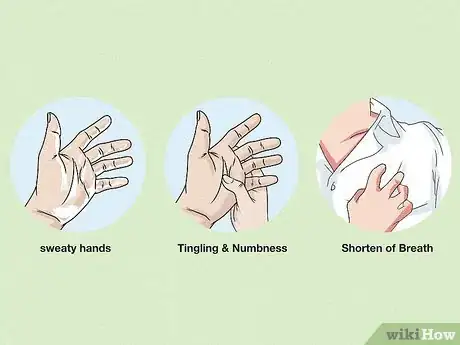
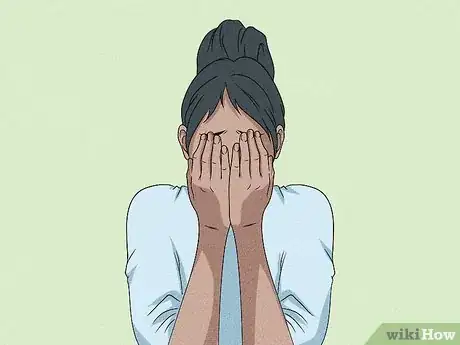

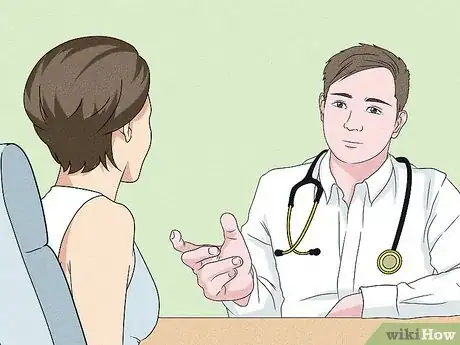




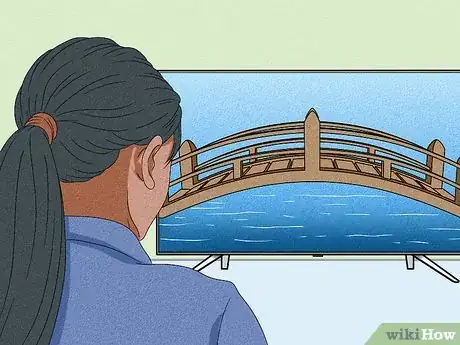





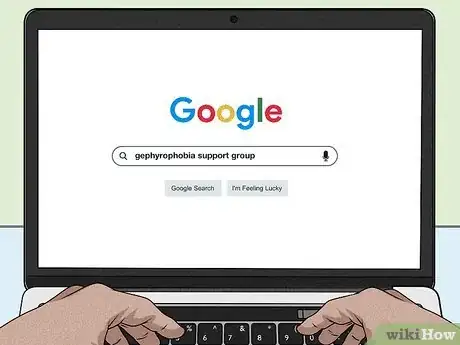




























































Medical Disclaimer
The content of this article is not intended to be a substitute for professional medical advice, examination, diagnosis, or treatment. You should always contact your doctor or other qualified healthcare professional before starting, changing, or stopping any kind of health treatment.
Read More...